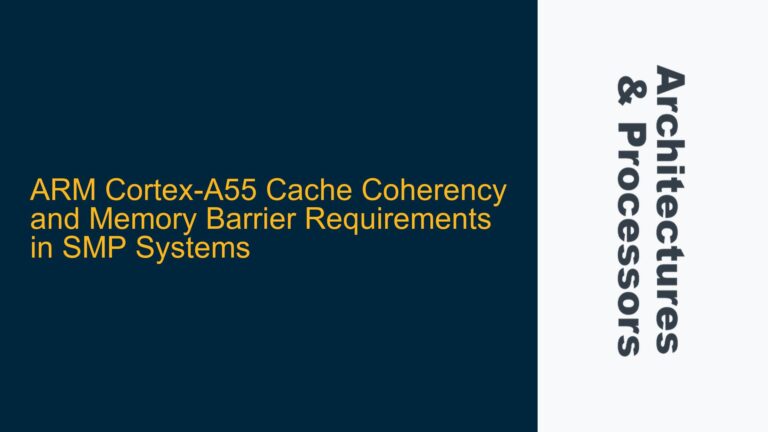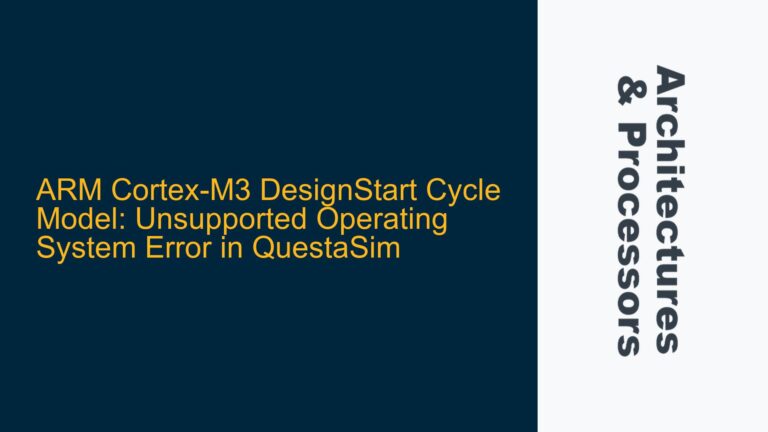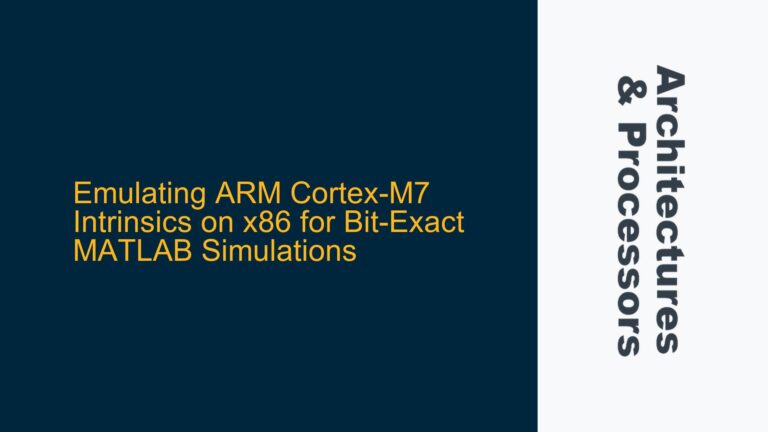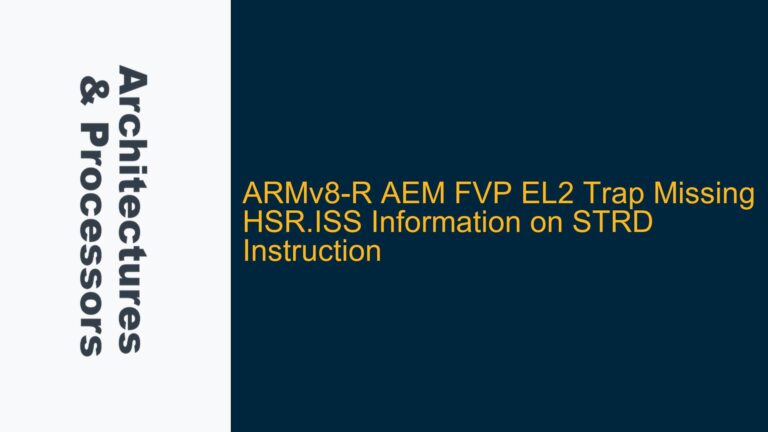ARMv8-M Security State Determination via CPUID_NS Register
The ARMv8-M architecture introduces TrustZone technology, which partitions the system into Secure and Non-secure states. This partitioning is crucial for ensuring that sensitive code and data are protected from unauthorized access. A common question that arises when working with ARMv8-M is how to determine the current security state of the core. Specifically, developers often need to know whether the processor is executing in Secure or Non-secure state at a given point in time. This is particularly important for privileged software that may need to make decisions based on the current security context.
The ARMv8-M architecture provides a mechanism for determining the security state of the core through the use of system registers. One such register is the CPUID_NS register, which is accessible only to software executing in Secure state. This register is located at a specific memory address and can be used to determine whether the core is currently in Secure or Non-secure state. The CPUID_NS register is part of the ARMv8-M system register set and is designed to provide information about the processor’s configuration and state.
The CPUID_NS register is located at address 0xE002ED00 and is reserved for software executing in Non-secure state. This means that Non-secure software cannot directly access this register without causing an exception. However, Secure software can access the Non-secure version of this register to determine the current security state of the core. The CPUID_NS register contains information about the processor’s implementation, including the security state. By reading this register, Secure software can determine whether the core is currently in Secure or Non-secure state.
The ability to determine the security state of the core is essential for implementing secure systems. For example, Secure software may need to perform different actions depending on whether it is executing in Secure or Non-secure state. Additionally, the security state of the core may affect how certain system resources are accessed or managed. By using the CPUID_NS register, developers can ensure that their software behaves correctly in both Secure and Non-secure contexts.
Memory Access Restrictions and Security State Verification
One of the key challenges in determining the security state of the core is ensuring that the information is accurate and cannot be tampered with by Non-secure software. The ARMv8-M architecture enforces strict memory access restrictions to prevent Non-secure software from accessing Secure resources. These restrictions are implemented through the use of memory protection units (MPUs) and the TrustZone security extensions.
The CPUID_NS register is located in a memory region that is reserved for Secure software. This means that Non-secure software cannot directly access this register without causing an exception. However, Secure software can access the Non-secure version of this register to determine the current security state of the core. This ensures that the information provided by the CPUID_NS register is accurate and cannot be modified by Non-secure software.
In addition to memory access restrictions, the ARMv8-M architecture also provides mechanisms for verifying the security state of the core. For example, the Secure software can use the CPUID_NS register to check whether the core is currently in Secure or Non-secure state. This verification process is essential for ensuring that the software is executing in the correct security context. If the core is in Non-secure state, the Secure software may need to take additional steps to ensure that sensitive resources are protected.
The ARMv8-M architecture also provides mechanisms for transitioning between Secure and Non-secure states. These transitions are controlled by the Secure software and are typically initiated through the use of special instructions or system calls. During a transition from Secure to Non-secure state, the Secure software must ensure that all sensitive resources are properly protected. This may involve clearing sensitive data from registers or memory, or disabling certain system features that are only available in Secure state.
Implementing Secure State Checks Using CPUID_NS Register
To implement a secure state check using the CPUID_NS register, developers must first ensure that the software is executing in Secure state. This can be done by checking the value of the CPUID_NS register. If the register indicates that the core is in Secure state, the software can proceed with its normal operation. If the register indicates that the core is in Non-secure state, the software must take additional steps to ensure that sensitive resources are protected.
The process of checking the security state of the core using the CPUID_NS register involves reading the value of the register and comparing it to a known value that indicates the Secure state. The exact value of the CPUID_NS register may vary depending on the specific implementation of the ARMv8-M architecture. However, the general process is the same across all implementations.
Once the security state of the core has been determined, the Secure software can take appropriate action based on the current state. For example, if the core is in Secure state, the software may need to enable certain security features or access sensitive resources. If the core is in Non-secure state, the software may need to disable certain features or restrict access to sensitive resources.
In addition to checking the security state of the core, the Secure software may also need to perform additional checks to ensure that the system is in a secure state. For example, the software may need to verify that the memory protection units (MPUs) are properly configured, or that certain system registers have not been tampered with. These additional checks are essential for ensuring that the system remains secure and that sensitive resources are protected from unauthorized access.
The ARMv8-M architecture provides a robust set of tools for implementing secure systems. By using the CPUID_NS register and other system registers, developers can ensure that their software behaves correctly in both Secure and Non-secure contexts. This is essential for building secure systems that can protect sensitive data and resources from unauthorized access.
Conclusion
Determining the security state of the core in ARMv8-M is a critical task for implementing secure systems. The CPUID_NS register provides a reliable mechanism for determining whether the core is currently in Secure or Non-secure state. By using this register, Secure software can ensure that it is executing in the correct security context and that sensitive resources are properly protected. The ARMv8-M architecture enforces strict memory access restrictions and provides mechanisms for verifying the security state of the core, making it an ideal choice for building secure embedded systems.
Developers working with ARMv8-M should be familiar with the CPUID_NS register and how to use it to determine the security state of the core. By following the guidelines outlined in this post, developers can ensure that their software behaves correctly in both Secure and Non-secure contexts, and that sensitive resources are protected from unauthorized access. The ARMv8-M architecture provides a robust set of tools for implementing secure systems, and the CPUID_NS register is an essential part of that toolkit.






